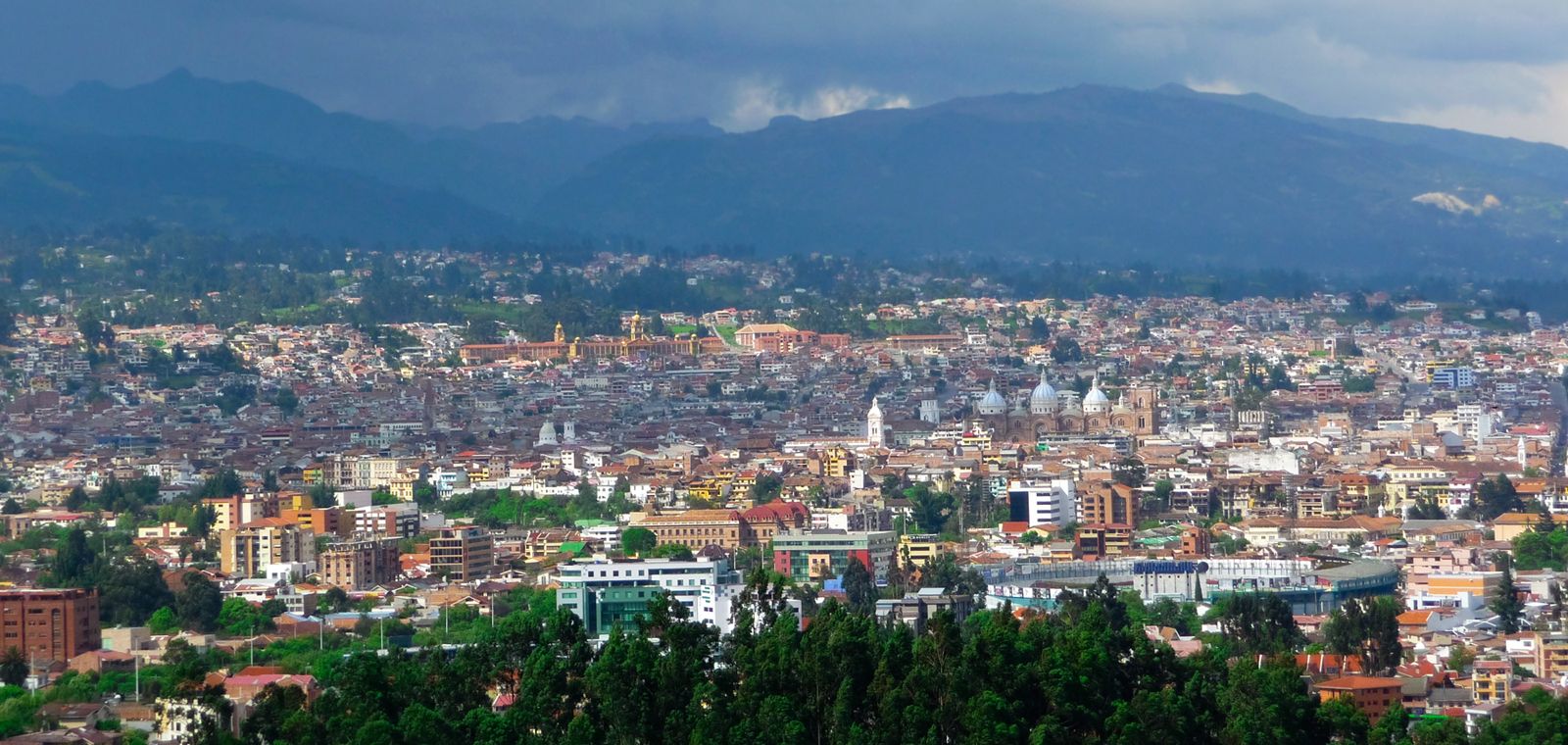Exploring Cuenca
LiveTheLifeinEcuador | February 20, 2015

View of Cuenca, Ecuador
From above, the historic city of Cuenca looks like a sea of red and orange-tiled roofs, punctuated with occasional patches of lush greenery and a round cathedral dome or two. The rushing waters of the Rio Tomebamba bisect the city. From this vantage point, Cuenca looks just like any other European-style colonial town. Apart from the fact that it’s remarkably well preserved, what makes it so special? To truly get to know Cuenca and to discover what makes it uniquely Ecuadorian you need to walk its streets, talk to its locals, taste its cuisine, and breathe in its air. To know Cuenca is to love it.
A cultural wonder
Santa Ana de los cuatro rios de Cuenca serves as the capital of the Azuay province, right in the heart of the formidable Ecuadorian Andes. For centuries, Cuenca has beautifully preserved its original orthogonal plan. This, along with having a high concentration of historical buildings, has made this center for the culture and arts a UNESCO World Heritage Site. Formerly a settlement of Inca-Canari peoples, Cuenca’s architecture features a successful marriage between the town’s own local flavors and various European influences.
Take a stroll
One of the best ways to get acquainted with Cuenca is to walk through its extensive network of streets, which are either wide and paved or narrow and cobbled. Taking a stroll throughout the city, you’ll be able to admire some of its architectural and historic gems. You can work your way from Parque Calderon, where the influence of the three pillars of society can be felt. The political and judicial aspects are represented via the town hall, the Governor’s Office, and the Law Courts, while the church’s influence is evident through the two cathedrals that stand opposite each other. The Church of the Shrine or Old Cathedral, while done in the Baroque architectural style, is comparatively simpler than its neighbor. Today, it functions as the Museum for Religious Art. Across the park, you’ll find the Cathedral of the Immaculate Conception or the New Cathedral; its three robin’s-egg blue and white domes easily distinguishable in the Cuencan skyline. Completed in the 1970s, the New Cathedral predominantly features a Romanesque Revival style, while at the same time combining small architectural elements from the Neo-Gothic, Baroque Revival, and Byzantine Revival movements.
During your leisurely walk, you’ll encounter these historic landmarks as well: the Monastery of El Carmen de Asuncion, Museum of the Aboriginal Cultures, House of the Ecuadorian Culture, and the Museo Monasterio de la Concepcion.
Eat, Dance, and Make New Friends
Get to know Cuenca even better through the local cuisine and special events scheduled throughout the year. Cuenca’s streets are littered with various dining establishments, from artisanal cafés to casual hole-in-the-wall restaurants to luxurious fine dining that showcases the best of Cuencan and Ecuadorian cuisine. Check out Restaurante Todosantos, Goda Restaurante, and Las Monjas while you’re in town.
There may be plenty of rich history and attractions in Cuenca, but the city’s true wealth are its people. Take some time to talk to the locals and know more about the historical center. Listen to their stories about the city and find new windows of opportunity to dive deeper into their history, culture, and lifestyle; you’ll find yourself living like a local in no time. Immerse yourself in your surroundings and let the city delight all of your senses; this is how you explore Cuenca.

